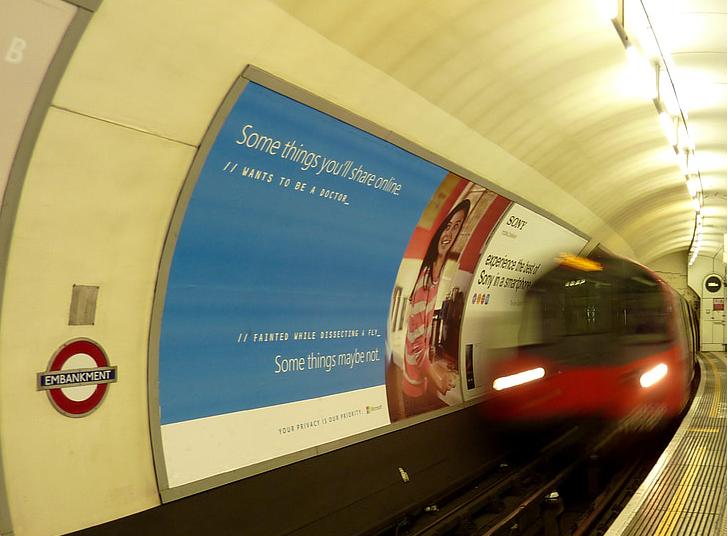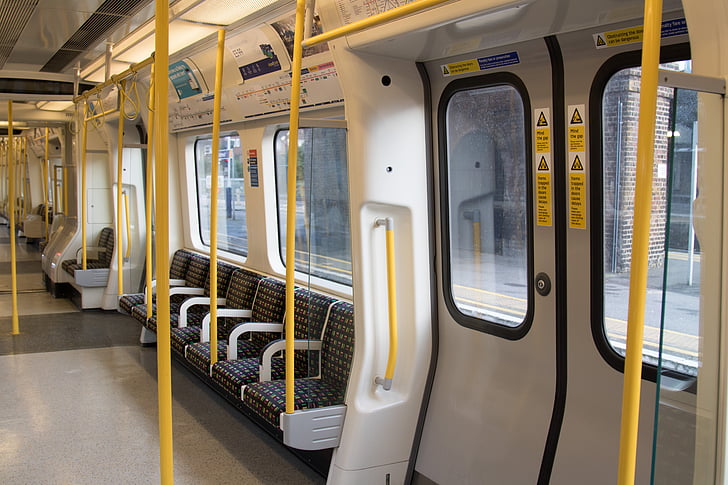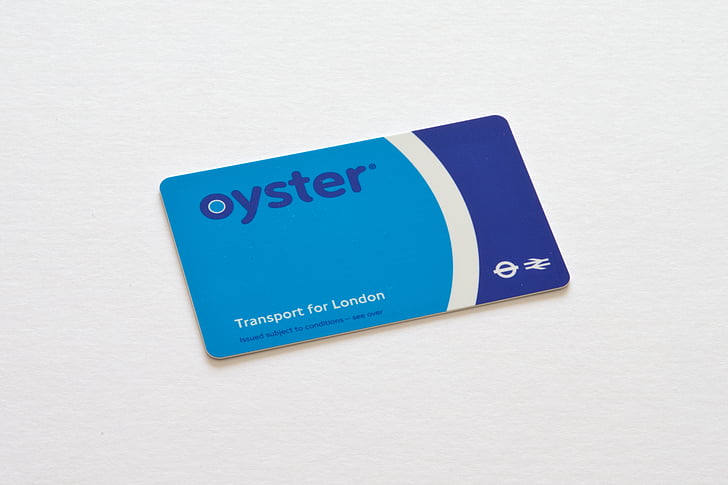Navigating London’s vast and bustling transport network can seem daunting, but with the Oyster Card, getting around the city becomes effortless and cost-effective. It is essential for seamless access to the Tube, buses, trams, and National Rail services. If you’re planning to visit or study in London, an Oyster Card is the best option for travelling affordably and conveniently.
In this blog, we’ll dive into everything you need to know about the London Oyster Card—what it is, how to buy Oyster Card, the benefits of using it, and tips to maximize your savings, etc. Stay tuned as we unravel the secrets to making the most of your Oyster experience!
What Is An Oyster Card?
An Oyster Card is a smart travel card used to pay for travel on London’s public transportation network. It’s a convenient and cost-effective alternative to paper tickets, offering pay-as-you-go fares that are often cheaper than standard tickets. You can top up Oyster Card with credit and use it as needed, making it a flexible option for visitors and students.
The transportation allowed by Oyster Card includes:
- Tubes
- Buses
- Trams
- Overground
- DLR(Docklands Light Railway)
- Thames Clippers (River Bus)
- Emirates Air Line (Cable Car)
- Some National Rail Services
You can also add:
- Travelcard
- Bus & Tram Pass
- Discounts
Please note: The Elizabeth line stations between Reading and Iver do not accept Oyster cards.
Types Of Oyster Cards
There are several kinds of Oyster Cards to suit different travel needs, and here are the primary types:
- Standard Oyster Card
Usually bought by residents.
- Visitor Oyster Card
Tailored for tourists visiting London for a short period.
It offers discounts at various attractions, restaurants, and shops across London, and it can be ordered online before your trip and delivered to your home or hotel.
- Student Oyster Card
Available to students who are enrolled at a London university.
It requires proof of student status when applying and it can offer discounted travel.
- Zip Oyster Card
It provides free travel for children under 11 and discounts (usually 50% off) for children aged 11–15.

Why Choose Oyster Cards For London Public Transport?
There are several reasons for choosing it:
- Cost-Effective: The Oyster card fares are often significantly lower than buying a paper ticket for the same journey.
- Convenient: Simply tap in and out at the beginning and end of your journey—no need for cash or tickets.And you can skip the ticket lines at the self-service entry gates for quick access to public transport.
- Wide Coverage: It works on all major transport networks in London: the Tube, buses, trams, Overground, DLR, and even some National Rail services. You can use one card to travel across the entire city!
- Flexibility: You can top up Oyster Card online, at stations, or at convenience stores, and travel everywhere.
- Exclusive Discounts: The Visitor Oyster Card gives you access to discounts at various attractions, restaurants, and shops across London, and students and children also benefit from reduced fares.
Where To Buy An Oyster Card?
You can buy an Oyster Card:
- Online with a contactless and Oyster account on TfL website
- At Tube, overground, and DLR stations—Available at ticket machines and service counters
- At London Travel Information Centers—Located at major stations like King’s Cross, Victoria, and Heathrow Airport.
- At Oyster Ticket Stops in many newsagents in London
- At London City Airport DLR station
- At the Tramlink Shop in Croydon
Oyster Card Prices
Using Oyster Card is a great method to save money when traveling. Here is detailed information on the price of the Oyster Card and how much you need to pay with it.
How Much Is An Oyster Card?
- Standard Oyster Card costs £7 (with a £5 deposit).
- Visitor Oyster Card costs £5 (non-refundable).
- You’ll need to top it up with additional travel credit depending on your needs.
Oyster Single Fares
The pay-as-you-go Oyster Card is the cheapest way to pay for single tickets on the London Underground. The Oyster Card single fares depend on travel zones and the time of travel (peak or off-peak).
For journeys in central London (zone 1), you can enjoy more than 50%-off ticket prices with an Oyster Card. Here’s a comparison between the Oyster Card single fares and the standard tube ticket fare (Cash single):
| Zones | Peak Fair | Off-Peak Fair | Cash |
|---|---|---|---|
| Zone 1 | £2.80 | £2.70 | £6.70 |
| Zone 1-2 | £3.40 | £2.80 | £6.70 |
| Zone 1-3 | £3.70 | £3.00 | £6.70 |
| Zone 1-4 | £4.70 | £3.20 | £6.70 |
| Zone 1-5 | £5.60 | £3.60 | £6.70 |
| Zone 1-6 | £6.70 | £3.90 | £6.70 |
Peak time: Monday to Friday, 06:30 – 09:30 and 16:00 – 19:00.
Off-peak time: All other times, including weekends and public holidays.
If you travel into central London (zone 1) from an outer zone, there is no afternoon peak fare. The off-peak fare is charged.
Oyster Daily Cap
The Oyster Daily Cap is a great benefit that ensures you never pay more than a set amount for travel in a single day. Once you hit the daily cap (the maximum fare for your travel), you can continue using public transport for the rest of the day without being charged any more.
This makes it an affordable option for anyone travelling multiple times in one day.
| Zones | Daily Cap |
|---|---|
| Zone 1-2 | £8.50 |
| Zone 1–3 | £10.00 |
| Zone 1–4 | £12.30 |
| Zone 1–5 | £14.60 |
| Zone 1–6 | £15.60 |
Weekly Oyster Card Fees
| Zones | Weekly Fees |
|---|---|
| Zone 1-2 | £42.70 |
| Zone 1-3 | £50.20 |
| Zone 1-4 | £61.40 |
| Zone 1-5 | £73.00 |
| Zone 1-6 | £78.00 |
SPECIAL CAP FOR BUS TRAVEL ONLY: £5.25 (Only travel on London’s buses on 1 day).
CHILDREN’S OYSTER CAPS: Off-peak: £1.80 (zones 1-9). Peak: approx half of adult cap.
How to Use Oyster Cards In London’s Transport System?
As a convenient way to navigate London’s extensive transport network, the Oyster Card is like an electronic purse designed for paying for public transportation. Here is how you can use them:
- Purchase and register Oyster Card.
- Place your card flat on the yellow card reader on the right-hand side of the ticket barrier.
- Do the same at the end of your journey to open the exit barriers.
- Even if there’s no physical barrier or if the barriers are open, you still need to touch the yellow card reader, or the full cash fare (£4–£7) is deducted from your journey.
- You do not need to touch out when you get off when taking buses.

Where Can You Use Oyster Cards In London?
The Oyster Card is valid across a wide range of regions in London, from the central areas to the outer zones, covering almost every corner of the city. Here’s a breakdown of the regions where you can use your Oyster Card:
- Central London (Zone 1): the British Museum, Oxford Street, Westminster, and the West End.
- Zone 2: Surrounding neighborhoods like Shoreditch, Camden, and Brixton.
- Zone 3–6: Outer regions including Wimbledon, Croydon, and Richmond.
- Merstham, Redhill, Earlswood, Salfords, and Horley.
- Gatwick Airport.
- Radlett and Potters Bar.
Please note that Oyster Cards are not accepted on certain train services, including Hull Trains, Virgin Trains, East Midlands Trains, Grand Central, and London North Eastern Railway.
How To Top Up Oyster Card?
The Oyster Card works on a pay-as-you-go basis, so you need to top up your oyster card with credit before you travel. Some convenient methods are as follows:
- Ticket machines: These are available at London Overground, London Underground Tube, or TfL Rail stations. Simply hold your card against the yellow reader to select “add top-up”, completing the transaction using cash or a credit/debit card. There are instructions on the screen to help you.
- Oyster ticket shops, visitor centers, or stations: There is usually staff at the ticket desks who will assist you in topping up your card conveniently.
- Online or via the App: You can top up online through the Transport for London (TfL) website or app.
- Auto top-up: You can set up auto top-up online, which means your Oyster Card will automatically add credit whenever your balance falls below a certain amount.
How to Check Oyster Card Balance?
Several ways are available to find out your Oyster Card Balance:
- Using Ticket Machines: Touch your card on the yellow reader of the ticket machine, and your remaining balance will flash up on the screen.
- Via an Oyster account online: If you register your card online with TfL, you can check how much money you have on your card.
- Via the Oyster app: Register your Oyster Card and check the balance on the official Oyster app.
- On an underground station ticket barrier: Your balance will appear on the exit window screen once you tap out.This doesn’t work on all barriers.

Oyster Card Refund Process
When you leave London, you can obtain an Oyster Card refund for any unused credit on your card, and the credit on the card does not expire so you can keep the card for future visits.
If your card has less than £10 credit remaining, you can request a refund at any Underground Tube Station’s Oyster machine. Just follow the instructions and once you receive the refund, your card will be cancelled and you will lose the £5 activation fee for visitor cards.
If you will return to London in the future, it’s advisable to obtain refunds at a TfL visitor center. They can refund the credit on your card while returning the card to you in working condition, allowing you to reuse it without paying another activation fee on your next visit.
The Visitor Oyster Card
The Visitor Oyster Card is designed for tourists which is usually given by a tour company or airline before you arrive. You can’t load a weekly Travel Card or Bus Pass to a Visitor Oyster, which makes it less flexible than the common card. It can only be used as a Pay-as-you-go card.
The Visitor Oyster Card is only worth buying if:
- You would like to pay for postage to your country and you can order it in advance
- You want to pay for your travel before you arrive
- You’re arriving after the tube stations have closed and can’t use a contactless card payment
Otherwise, just wait until you arrive in London and get an ordinary Oyster Card.
Tips for New Students in London
There are some handy tips for students studying in London to travel affordably and conveniently:
- Travel During Off-Peak Hours: During these hours, not only the fares are cheaper, but the transport is less crowded.
- Download the TfL App: It is incredibly useful for planning journeys, checking live updates, and topping up your Oyster Card.
- Check Your Balance Regularly: Make it a habit to check your balance regularly, and you can do this at any ticket machine or online.
- Keep Your Oyster Card Safe: If you lose it, you lose your credit. Registering your card online will protect your balance if it’s lost or stolen.
Conclusion
To sum up, the Oyster Card is an essential tool for convenient and affordable travel across London, which offers access to different public transportation at discounted rates. Also, the process of using and topping up is simple, ensuring a smooth living and traveling experience. It is a must-have choice especially for students studying there. Don’t hesitate to look through uhomes.com to find affordable and well-equipped apartments so that you can enjoy convenient transportation with your Oyster Card.
FAQs
You can buy Oyster Card:
1. Online
2. At Tube, overground, and DLR stations
3. At London Travel Information Centers
4. At Oyster Ticket Stops in many newsagents in London
5. At London City Airport DLR station
6. At the Tramlink Shop in Croydon
- Standard Oyster Card costs £7 (with a £5 deposit).
- Visitor Oyster Card costs £5 (non-refundable).
- You’ll need to top it up with additional travel credit depending on your needs.
Yes, non-UK residents can absolutely buy an Oyster Card! There’s no restriction based on residency. In fact, you can get a Visitor Oyster Card, which is specifically designed for tourists. The main difference with the Visitor Oyster Card is that it often comes with discounts for attractions and can be ordered online in advance, so you have it ready when you arrive.
An Oyster Card is used to pay for travel on public transport in London. The great thing about it is that it has a “pay as you go” system, so you only pay for the journeys you take. It also caps your spending at a certain amount per day, so once you’ve hit that limit, you don’t pay more for additional travel that day.
Yes, in most cases, using an Oyster Card is cheaper than paying with a contactless debit or credit card. If you’re just visiting and don’t want to mess around with topping up a card, contactless payment via your phone or bank card could be a great option. But if you prefer to budget ahead and control your travel spend, an Oyster Card might be the best way to go.








